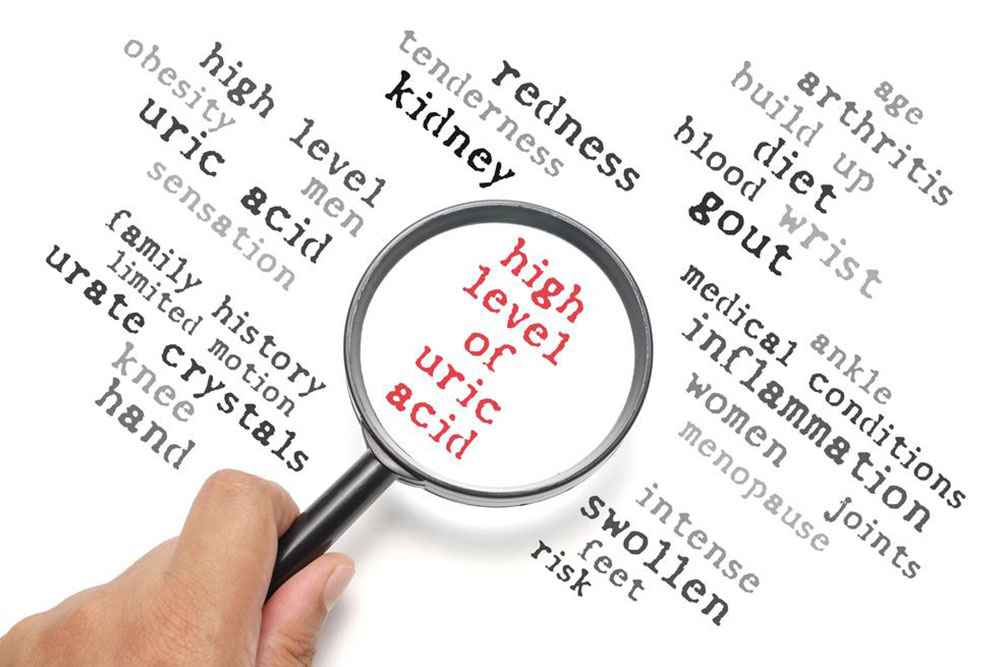Comprehensive Guide to Managing Gout and Type 2 Diabetes for Better Health
This comprehensive guide explores the connection between gout and type 2 diabetes, emphasizing the importance of integrated management strategies. It covers medication options, dietary adjustments, lifestyle modifications, and monitoring techniques to effectively control both conditions and improve overall health outcomes. Proper understanding and proactive management can reduce flare-ups, prevent complications, and enhance quality of life for individuals affected by these metabolic disorders.

Understanding the Interconnection Between Gout and Type 2 Diabetes
Gout is a common form of inflammatory arthritis characterized by sudden and intense joint pain, swelling, and redness. It is primarily caused by elevated levels of uric acid in the blood, a condition known as hyperuricemia. Uric acid is a waste product formed when the body breaks down purines—a natural substance found in many foods. Normally, uric acid dissolves in the bloodstream and is eliminated through the kidneys via urine. However, when the body produces too much uric acid or the kidneys fail to eliminate it effectively, uric acid crystals can deposit in joints and tissues, triggering painful gout attacks.
There is a well-established link between gout and type 2 diabetes. Many individuals with diabetes are more prone to hyperuricemia, which increases their risk of developing gout. This connection is primarily driven by insulin resistance, a hallmark of type 2 diabetes. Insulin resistance impairs kidney function and disrupts uric acid excretion, leading to higher uric acid levels. Conversely, elevated uric acid can contribute to inflammation and insulin resistance, creating a bidirectional relationship that complicates both conditions.
Research published in leading medical journals, such as the 2014 Annals of Rheumatic Diseases, emphasizes that women suffering from gout face a higher likelihood of developing type 2 diabetes compared to those without gout. Elevated uric acid levels not only contribute to joint inflammation but also increase the risk of metabolic disturbances associated with diabetes. Managing these interconnected health issues is vital to reducing the risk of complications and improving overall quality of life.
Effective Strategies for Managing Gout and Blood Sugar Levels
Managing gout alongside type 2 diabetes requires a comprehensive approach that combines medication, dietary adjustments, lifestyle modifications, and regular health monitoring. The main goal is to keep uric acid levels at or below 6 mg/dL, which significantly lowers the risk of gout flares and minimizes complications from both conditions.
Regular blood tests or 24-hour urine assessments are essential for monitoring uric acid levels. Based on these results, healthcare professionals may prescribe medications aimed at controlling uric acid production and promoting its excretion. These include:
Xanthine oxidase inhibitors: Such as allopurinol or febuxostat, which decrease uric acid synthesis by inhibiting the enzyme responsible for purine breakdown.
Uricosuric agents: Like probenecid or lesinurad, which enhance renal uric acid excretion by blocking its reabsorption in the kidneys.
In addition to medication, lifestyle changes play a crucial role. Applying the following strategies can provide significant benefits:
Dietary modifications: Limit foods rich in purines, including shellfish, organ meats, certain fish (sardines, anchovies), and high-fat dairy products. Reduce alcohol, particularly beer and spirits, which can elevate uric acid levels. Incorporate more fruits, vegetables, whole grains, and low-fat dairy into your diet. Focus on complex carbohydrates and fiber to improve insulin sensitivity.
Hydration: Stay well-hydrated by drinking at least eight glasses of water daily to facilitate uric acid excretion and prevent crystal formation.
Exercise: Regular physical activity helps control blood sugar, maintain a healthy weight, and reduces the risk of gout attacks. Engage in moderate exercise like walking, swimming, or cycling for at least 150 minutes a week.
Weight management: Achieving and maintaining a healthy weight decreases uric acid levels and improves insulin sensitivity.
Managing comorbidities: Control other health conditions such as hypertension, obesity, and kidney problems, all of which exacerbate gout and diabetes risk.
It’s equally important to monitor and manage blood glucose levels carefully. People with both conditions should work closely with healthcare providers to optimize treatment plans, including the possible use of medications like metformin, insulin, or other antidiabetic drugs, alongside gout-specific therapies.
In conclusion, understanding the connection between gout and type 2 diabetes is essential for effective management. Combining medication, lifestyle changes, and regular monitoring can significantly reduce flare-ups, prevent complications, and enhance overall health. With proper care, individuals can lead active, symptom-free lives while reducing the burden of these interconnected chronic conditions.





